The Old-Fashioned Way: Tove Jansson’s Hobbit Illustrations
Okay — close your eyes and visualize Middle-earth. I can’t be certain what you’re seeing behind your eyelids, but I think I have a good chance of guessing; five will get you ten that whatever you’re conjuring bears a strong resemblance to the Alan Lee Lord of the Rings book illustrations and to Tolkien’s world as envisioned in Peter Jackson’s films (on which Lee and John Howe did much of the production design).
The austere, rather chilly (once you’re out of the Shire, anyway) Lee/Howe template has become the default picture of Middle-earth for many — if not most — people, but there are other ways to view Tolkien’s realms and their inhabitants. I have already sworn my fealty to the first such visualization that I ever encountered: the beautiful Tim Kirk paintings that were featured in the 1975 Tolkien Calendar.
I am also partial to another version that’s not nearly well enough known, the gorgeous illustrations done by Michael Kaluta for the 1994 Tolkien Calendar. (Kaluta is probably best known for his comic book work, especially on the 1970’s Shadow for DC.)
One thing that makes both Kirk’s and Kaluta’s art so attractive to me is that its depiction of Middle-earth is just different from the one that has become the current standard. (Kaluta’s work is especially striking because it is so extravagantly colorful compared to Lee’s and Howe’s bleached-out work.)
Also, please understand, I — who cannot draw a straight line — am not criticizing the fine work of Lee and Howe or any other artist, merely pointing out that there are other, equally fruitful ways of looking at Tolkien’s creations.
All of which is to say that there’s more than one way to skin an orc — or draw a dwarf — and alternate visions can come from unexpected places, as I found out last Christmas when my daughter Samantha gave me a gift that was a real surprise — a Finnish edition of The Hobbit. Instead of coming from an Amazon warehouse, it came all the way from Finland (I was told that it arrived just in the nick of time), and is indeed in the exotic-looking Finnish language, which, uh… I can’t read a word of (except for “Bilbo” and “Gandalf”, which are apparently the same in Finnish, and I think I’ve figured out that dwarves are kääpiötä).
Nevertheless, it was a wonderful gift, because it’s illustrated by Tove Jansson, who was herself wonderful.
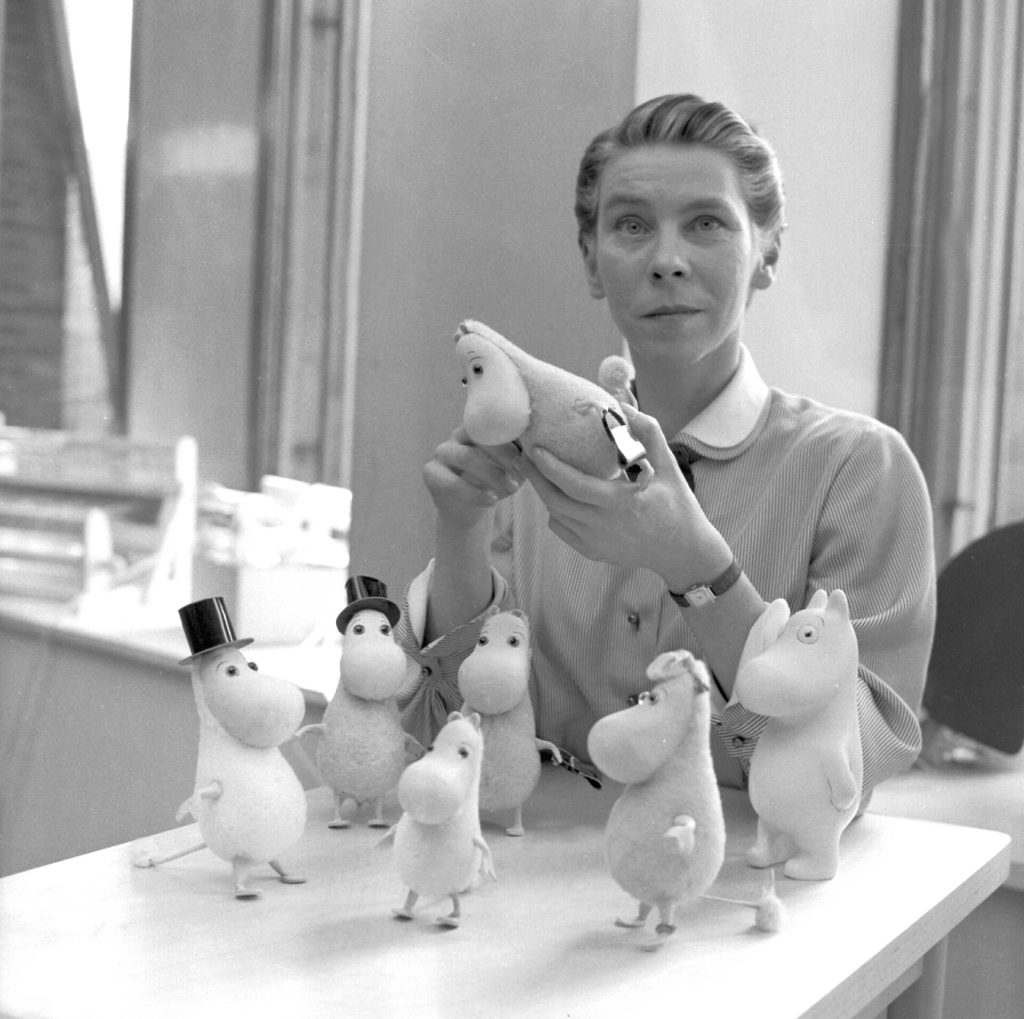
Jansson (who died in 2001) was a Finnish artist and writer who is probably best known (outside of Scandinavia, anyway) for the eight “Moomin” children’s fantasies she wrote beginning in the mid-1940’s and ending with the last volume in 1970. Set in Moominland and featuring the Moomin family and their eccentric friends (Moomins look sort of like hippos, or ambulatory marshmallows), the books are whimsical, dreamlike, gentle, satirical and sinister, all at the same time. I only recently discovered them, and I find them disquieting and delightful, which is one of the best combinations going.
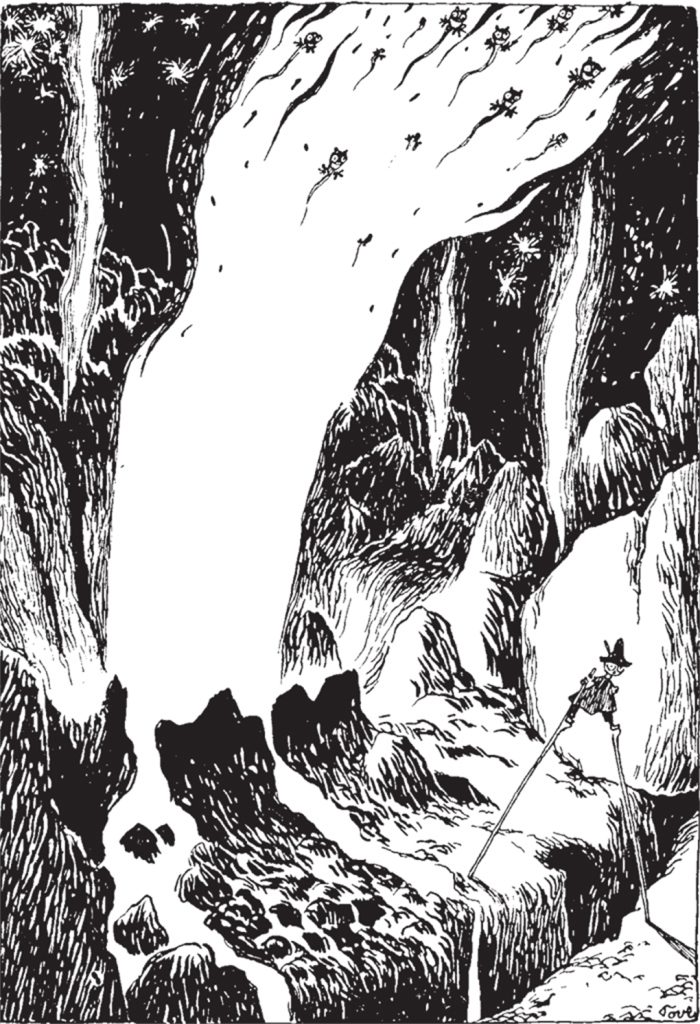
Jansson illustrated the Moomin stories herself, and her pen-and-ink drawings are some of the best things about the books. The illustrations for the first book in the series, Comet in Moominland, are especially striking; some of them are a cross between a kind of nightmare Lovecraftian landscape and the surreal imagery of William Hope Hodgson’s The Night Land.
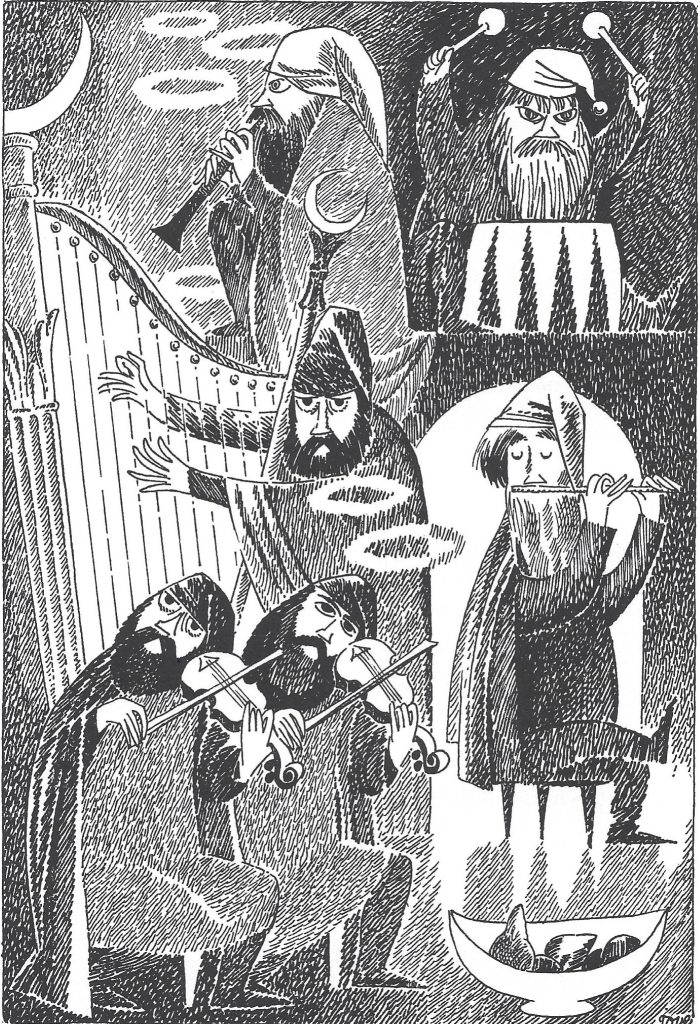
Though I’ve steadily been working my way through the Moomin books, I wasn’t aware until I had the Finnish Hobitti in my hands that Jansson had illustrated anyone else’s work. One look at her gorgeous cover illustration made me glad that she did. (There will always be a special place in my heart for a rampaging dragon.)
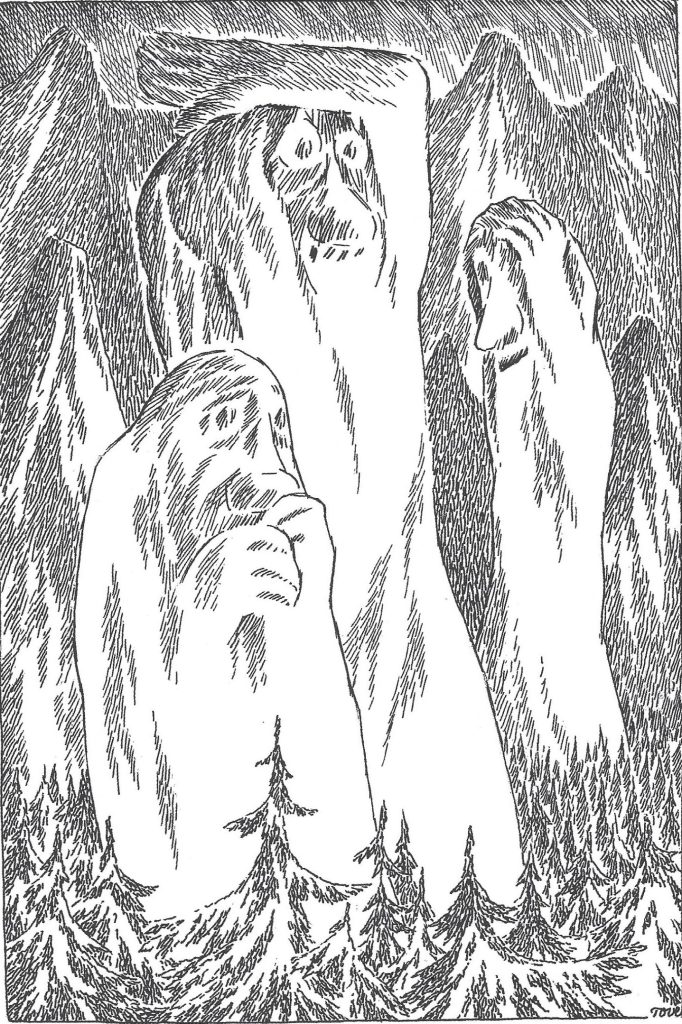
Jansson did her Hobbit illustrations for a 1962 Swedish edition (she was a member of Finland’s Swedish-speaking minority community) and they are refreshingly different from the more realistic renderings of Middle-earth and its inhabitants that are common today. She did twelve full-page black-and-white drawings for the book, another ten that cover half to a third of a page, and many smaller drawings that decorate the beginning or end of chapters.
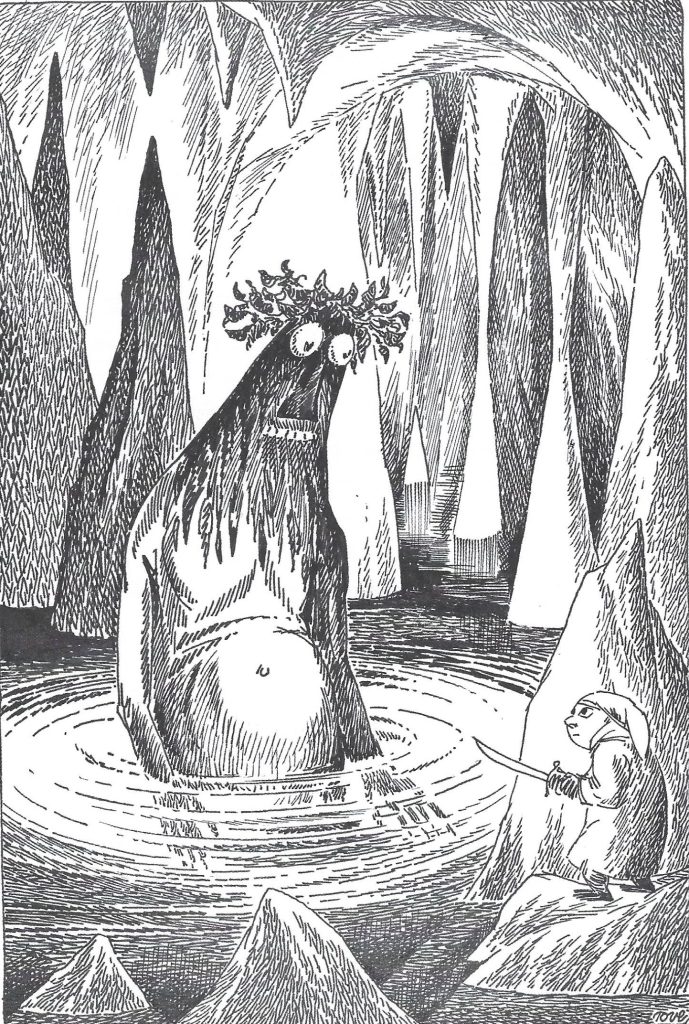
One thing that will immediately stand out to any Tolkien lover who flips through Jansson’s Hobitti is her visualization of Gollum. In Jansson’s drawings he’s huge, towering over Bilbo, and when Tolkien saw these illustrations, he supposedly realized that he had never specified exactly how large the slimy creature was, and so made the appropriate corrections for the Hobbit’s next edition, cutting Bilbo’s antagonist down to size.
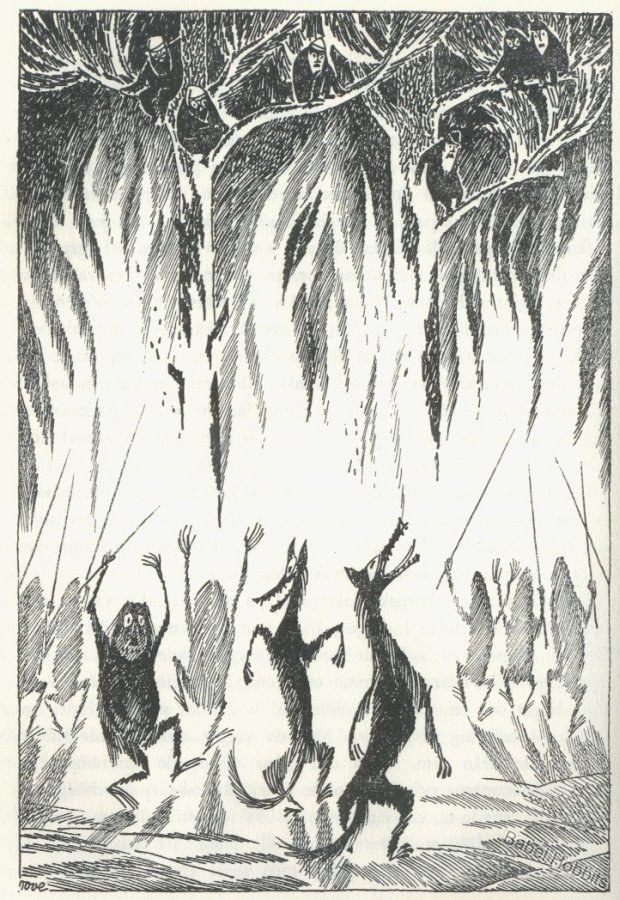
Jansson’s Tolkien illustrations are all her own; they’re not like any other rendition of Middle-earth that I can think of, and in comparing these wonderful pictures with more current ones, you can glimpse an older tradition, one that has its roots in the “North” that Tolkien loved, one that goes back to the sagas and Norse eddas that gave him his inspiration.
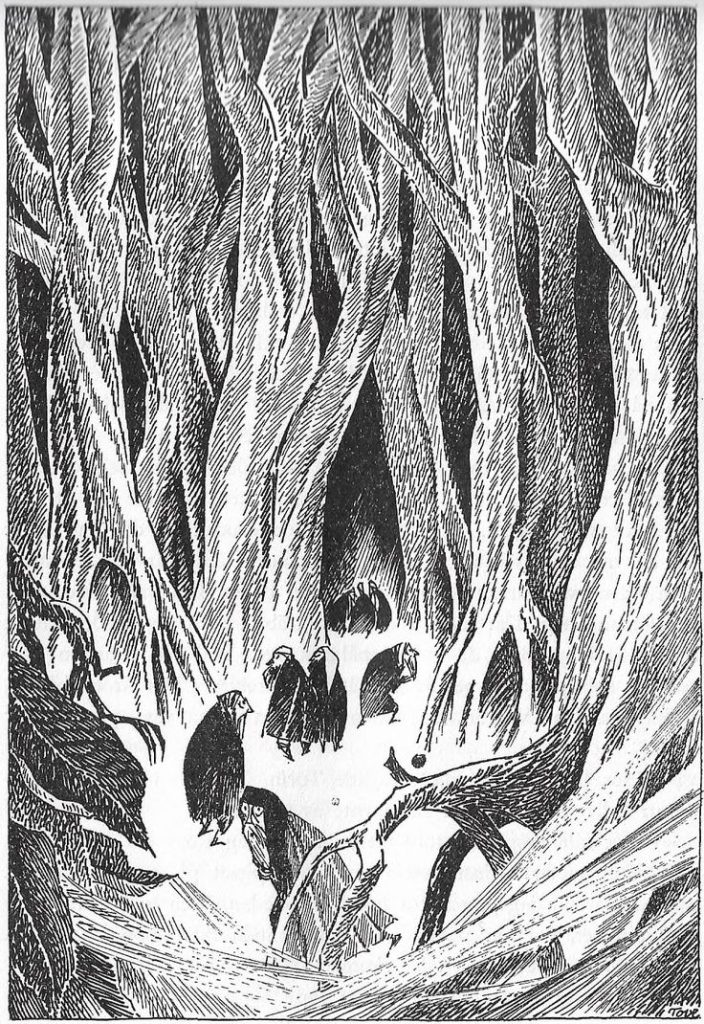
These simple-looking illustrations may not be to the taste of folks raised on fantasy photorealism (of course, in the hands of a true artist, there are few things deeper and more nuanced than simplicity), but I love them; their bold, expressionist lines combine the weird and the whimsical, the humorous and the beautiful, all with echoes of the heroic and the epic. I think Tove Jansson was a perfect match for Tolkien and his world.
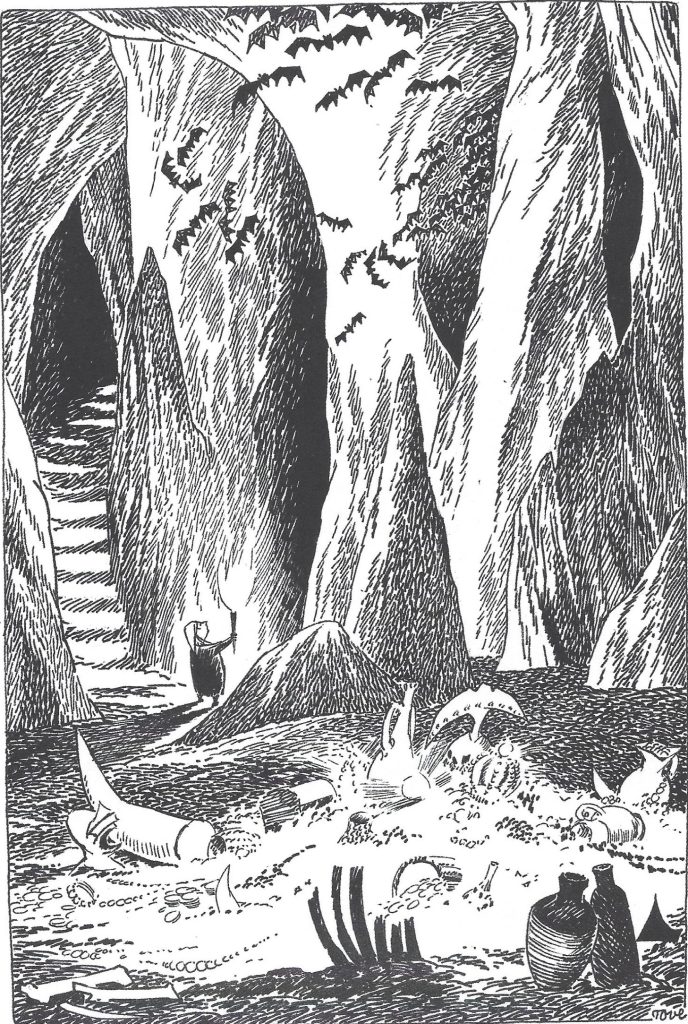
Just the other day I found out that Jansson did illustrations for Lewis Carrol’s Alice’s Adventures in Wonderland; NYRB Classics has just published a new edition featuring her drawings. Seeing what sparks Carrol’s story struck from Jansson is a rabbit hole I can’t wait to go down.
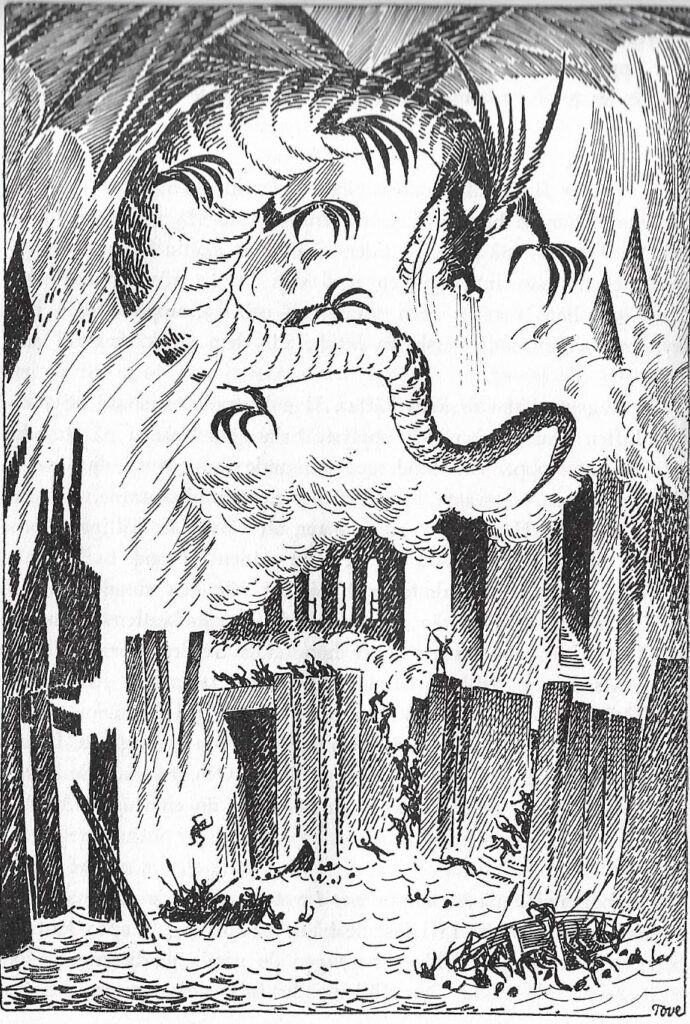
Until I can report back on Jansson’s Alice, I commend her Hobitti to you (her Moomin books, too), and I leave you with this:
Kaikki asekuntoiset ihmismiehet ja suurin osa haltiakuninkaan joukoista valmistautuivat marssimaan pohjoiseen Vuorta kohti. (What does that mean? I dunno, but it comes at the end of chapter Tulta Ja Vettä.)
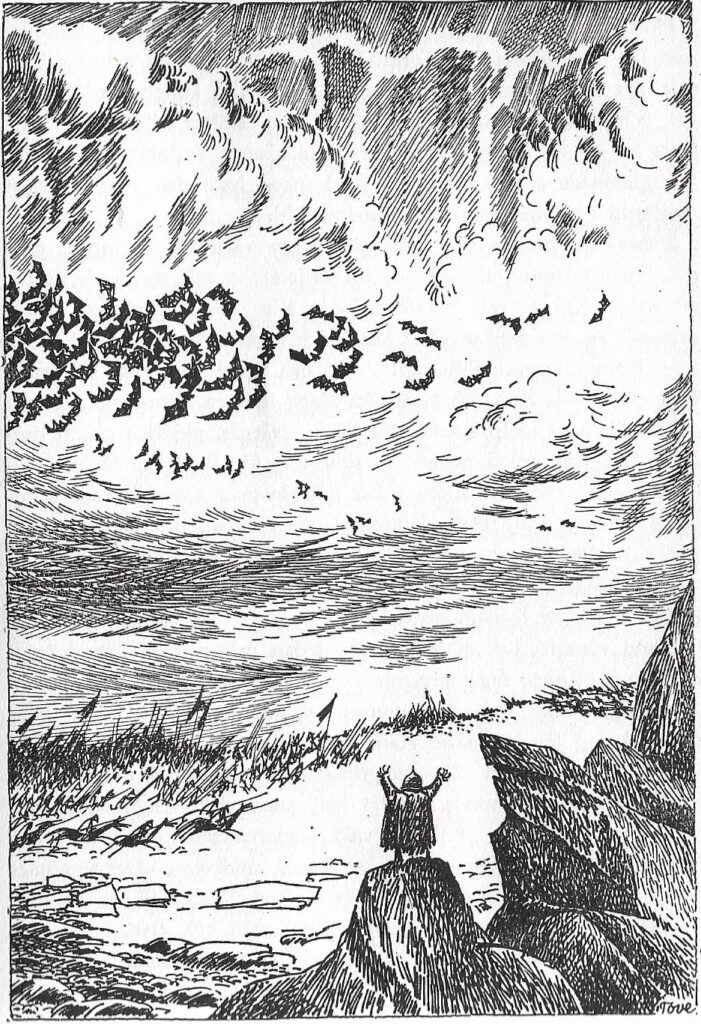
Thomas Parker is a native Southern Californian and a lifelong science fiction, fantasy, and mystery fan. When not corrupting the next generation as a fourth grade teacher, he collects Roger Corman movies, Silver Age comic books, Ace doubles, and despairing looks from his wife. His last article for us was The Lost World
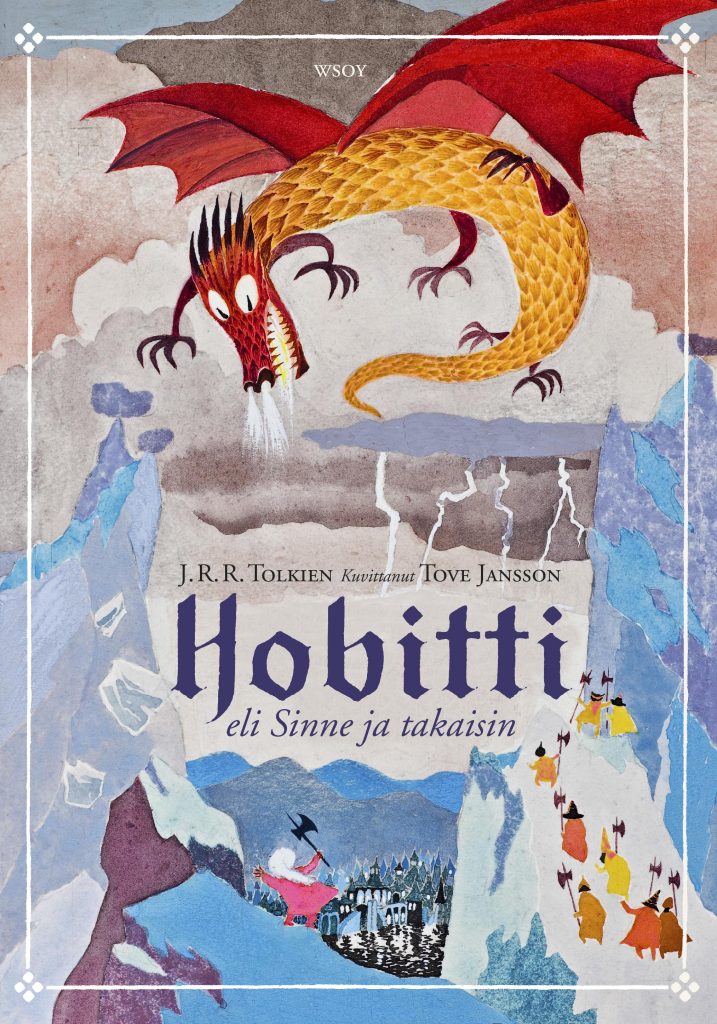
Well that’s some charming work in its own right but also because they bear a faint resemblance to Barbara Remington’s wonderful, panoramic cover art the Ballantine mass market editions from the mid sixties. So much of the Tolkien indpired artwork from the seventies on is so…prosaic and a bit bland by comparison. Nice story.
I’d forgotten about those covers – they are wonderful, and I also love the cover Remington did for the Ballantine edition of Eddison’s The Worm Ouroboros,
Remington’s covers are certainly eye-catching, even if they aren’t particularly accurate to the books. But you can hardly blame her, as she had a very tight deadline because the Ballantine paperbacks were rushed out in response to the unauthorized Ace editions, leaving her no time to read them.
I did not properly appreciate Ms. Remington’s LotR cover(s), not realizing that it was a continuous portrait of Middle Earth until I saw a poster of the whole artwork together. I have embraced them since that eye-opening moment.
For me, Middle-Earth will always look like Tolkien’s own illustrations of Middle-Earth. His art is worth a look.
Seeing these illustrations, particularly the dwarves, reminded me of a 60s/70s classic BBC children’s series, The Adventures of Noggin the Nog. These stories were about a young king named Noggin who ruled northern kingdom. He was like a civilised, gentle Viking, always defeating his arch enemy Nogbad the Bad. The illustrations were medieval in character most likely inspired by the Bayeux Tapestry although the makers also cite the Lewis Chessmen as their illustrative source. You can check out episodes on YouTube. Oliver Postgate, who wrote and animated the stories, was also responsible for The Clangers which took the bicycle pump to science fictional heights. I suspect that Postgate read the Moomin stories as his work has a distinct Jansson vibe. NeilH
The way I visualized the Hobbits, at least, is very strongly influenced by the 1977 Rankin-Bass cartoon, that being my first introduction to Tolkien.
Love the Jansson illustrations, though.
There were some unconventional choices in the Rankin-Bass show, but overall I love it.
I get a strong Edward Gorey vibe from Ms. Jansson’s drawing style, mainly from the long, cape-like garments of the figures and the delightful little flight-y bats. And the Barbara Remington tone is also apparent. What nice company in which to be!
[…] Earlier this year (May, for fellow pedants), “native Southern Californian […,] lifelong science fiction, fantasy, and mystery fan”, Thomas Parker of Black Gate, homed-in on Middle-earth and a few of the incredible illustrations inspired by ‘Lord of the Rings’ over the years – including “alternate visions […] from unexpected places”. In particular, Tove Jansson’s pen-and-ink drawings for “a 1962 Swedish edition” of The Hobbit (Hobitti, eli, Sinne ja takaisin). Jansson’s drawings, he says, were unlike any he had seen before and “in comparing these wonderful pictures with more current ones, [it was possible to] glimpse an older tradition, one that has its roots in the ‘North’ that Tolkien loved”. Thomas “loved” Tove’s work, describing it as “bold, expressionist […,] weird […,] whimsical” and “humorous”. The “perfect match for Tolkien and his world.” To read more of his reflections and see many of Jansson’s wonderful black and white creations for this novel, please head to The Old-Fashioned Way: Tove Jansson’s Hobbit Illustrations. […]